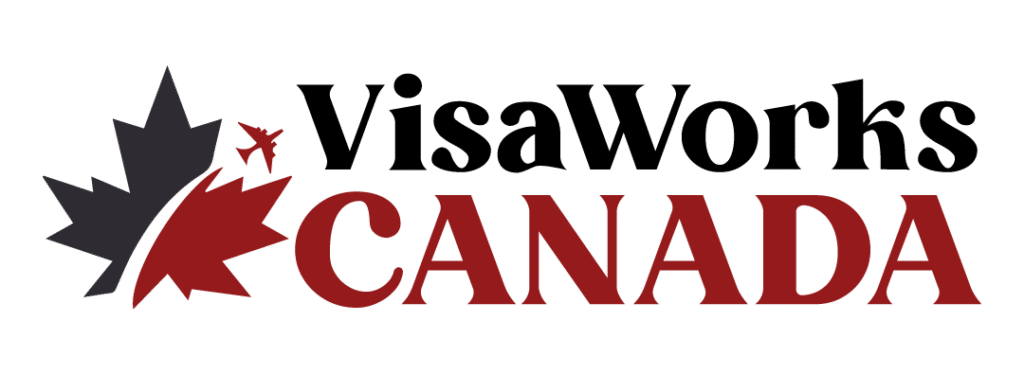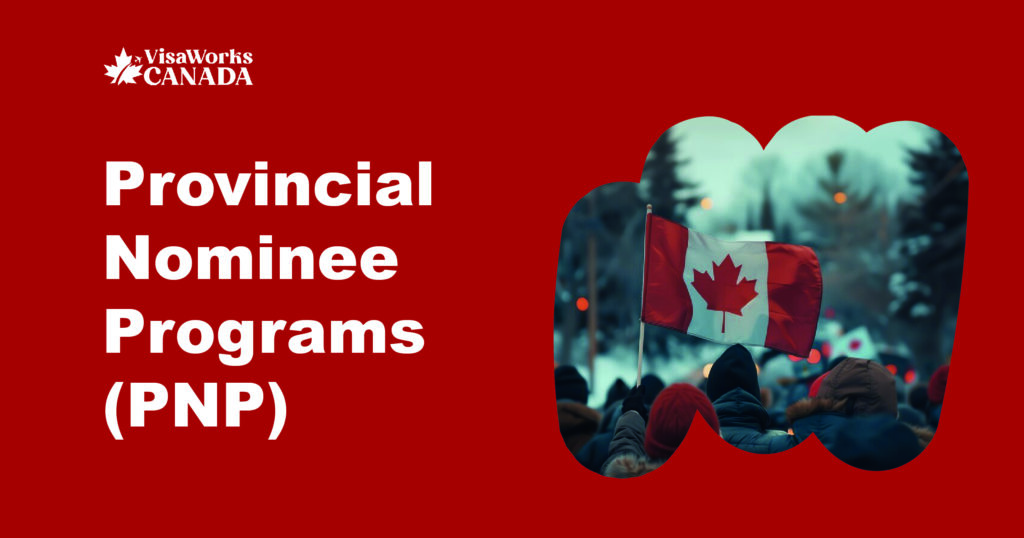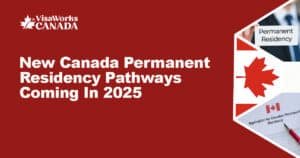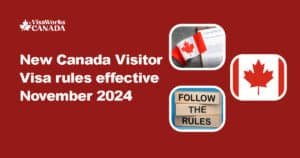Provincial Nominee Programs (PNPs) are immigration pathways operated by Canada’s provinces and territories, excluding Quebec and Nunavut. Each province and territory runs several PNP streams tailored to meet their unique economic and demographic needs. These streams have varying eligibility criteria and application procedures, making PNPs a versatile and popular option for many aspiring immigrants.
Table of Contents
ToggleWhy PNPs are Popular:
PNPs can often be the most straightforward route to obtaining Canadian permanent residence. However, it’s important to note that while provinces can nominate candidates for permanent residence, the final decision is made by the federal government. This means that PNPs are essentially the first step in a two-part immigration process.
The Two-Step Process:
- Provincial Nomination:
- Application: Interested immigrants apply to a specific PNP stream that aligns with their skills and qualifications.
- Nomination: If the application is successful, the province nominates the candidate for permanent residence.
- Federal Application:
- Submission: The nominated candidate then applies to the federal government for permanent residence.
- Approval: The federal government reviews the application and makes the final decision on permanent residence status.
Key Points:
- Eligibility: PNPs have diverse eligibility criteria based on the specific needs of each province or territory.
- Streams: Different PNP streams target various categories of immigrants, such as skilled workers, entrepreneurs, and international graduates.
- Nomination: Provincial nomination is crucial but only part of the process. Federal approval is mandatory for permanent residence.
By navigating through the PNPs and understanding the specific requirements of each stream, applicants can find the most suitable pathway to start their new life in Canada. The process might seem complex, but with the right guidance and preparation, it can be a smooth and rewarding journey.
Provinces and Territories
Canada’s provinces and territories (excluding Nunavut and Quebec) each have their own distinct Provincial Nominee Programs (PNPs). These programs are tailored to address the specific economic and demographic needs of each region. Since requirements and application procedures differ significantly among provinces, it’s essential for prospective applicants to research the eligibility criteria of each PNP.
List of Provinces and Territories with PNPs:
- Alberta
- British Columbia
- Manitoba
- New Brunswick
- Newfoundland and Labrador
- Northwest Territories
- Nova Scotia
- Ontario
- Prince Edward Island
- Saskatchewan
- Yukon
Applying for a Provincial Nominee Program in Canada
Step-by-Step Guide:
- Choose the Right PNP for You: Review the provinces and territories listed above to decide where you want to live. Investigate the specific requirements for each PNP to determine which program you qualify for.
- Submit Your Application to the Selected PNP: Once you’ve identified the appropriate PNP, submit your application directly to that province or territory.
- Receive a Provincial Nomination Certificate: If your application is approved, you will receive a nomination from the province or territory, allowing you to apply for Canadian permanent residence. Keep track of the latest PNP invitation draws to stay updated.
- Apply for Permanent Residence: Submit your permanent residence application to the Canadian federal government. If your PNP is integrated with Express Entry, you can apply online. Otherwise, you’ll need to submit a paper-based application
How to Apply Through the Express Entry Process
Step-by-Step Guide:
- Create an Account and Submit an Express Entry Profile:
- Begin by creating an online account with Immigration, Refugees and Citizenship Canada (IRCC).
- Complete and submit your Express Entry profile, providing detailed information about your skills, work experience, language ability, education, and other personal details.
- Apply to an Express Entry-Aligned Provincial Nominee Program (PNP):
- Identify and apply to PNPs that are aligned with the Express Entry system. Each province has unique criteria and streams targeting different types of immigrants.
- Receive an Express Entry Stream Nomination:
- If you meet the provincial criteria, you will receive a nomination from the province. This nomination significantly boosts your chances in the Express Entry pool.
- Confirm the Nomination on Your Profile and Receive 600 Additional Points:
- Accept the nomination in your Express Entry profile. This adds 600 points to your Comprehensive Ranking System (CRS) score, effectively ensuring you receive an Invitation to Apply (ITA) for permanent residence in the next draw.
- Wait to Receive an Invitation for Permanent Residence:
- With the additional points from the provincial nomination, wait for the next Express Entry draw to receive your ITA.
- Apply for Canadian Permanent Residence through the Express Entry System:
- Once you receive an ITA, you have 60 days to submit a complete application for permanent residence through the Express Entry system.
Express Entry-Aligned Provincial Nominee Programs:
In 2015, Canada introduced the Express Entry system to manage applications for permanent residence through its major economic immigration programs. Since then, many provinces have developed “enhanced” PNP streams aligned with Express Entry. Here’s how it works:
- Enhanced PNP Streams:
- These streams require applicants to have an Express Entry profile.
- Being nominated through an enhanced PNP stream grants you an additional 600 CRS points, virtually guaranteeing an ITA in the next Express Entry draw.
- Non-Express Entry PNP Streams:
- If you receive a nomination through a PNP not aligned with Express Entry, you must submit a non-Express Entry federal application for permanent residence.
- Non-Express Entry applications can take significantly longer to process compared to electronic Express Entry applications.
Tips for a Successful Application:
- Ensure all information is accurate and complete.
- Follow the specific application procedures for your chosen PNP.
- Pay attention to deadlines and submission requirements to avoid refusals due to incomplete applications.
By understanding and navigating the PNP and Express Entry processes effectively, you can increase your chances of successfully obtaining Canadian permanent residence.
Do I Need Work Experience to Immigrate Through a PNP?
Most Provincial Nominee Programs (PNPs) require at least one year of work experience to apply. However, there are some nominee programs specifically designed for post-graduate students that do not require work experience or a job offer. Examples of these programs include:
- Ontario Masters Graduate Stream: This stream targets graduates with a master’s degree from an eligible Ontario university.
- Ontario PhD Graduate Stream: This stream is for graduates who have completed a PhD at an eligible Ontario university.
- British Columbia International Post-Graduate Stream: This stream is aimed at graduates with a master’s or doctoral degree in the natural, applied, or health sciences from an eligible British Columbia institution.
These streams provide a pathway to permanent residence for international students who have completed advanced degrees in Canada, facilitating their transition to becoming permanent residents without the requirement of prior work experience.
Documents Required for a PNP
When applying for a Provincial Nominee Program, candidates must provide documentation that demonstrates their eligibility. The required documents typically include:
- Language Results: Proof of language proficiency in English or French, usually through tests such as IELTS or CELPIP for English, or TEF for French.
- Educational Credential Assessment (ECA) Reports: These reports assess your foreign education credentials to determine their equivalence to Canadian standards.
- Proof of Work Experience: Documentation such as employment letters, pay stubs, and tax documents that verify your previous work experience.
- Proof of Settlement Funds: Evidence that you have sufficient funds to support yourself and your family after you arrive in Canada. This can include bank statements, investment documents, or other financial records.
- Civil Documents: Identification documents such as birth certificates, marriage certificates, and police certificates.
- Status Documents: Proof of legal status in your current country of residence, such as a visa or residence permit.
By carefully preparing and submitting these documents, you can demonstrate your eligibility and increase your chances of a successful application.
How Can I Increase My Chances of Receiving a Nomination?
Increasing your chances of receiving a nomination for a Provincial Nominee Program (PNP) involves several strategic steps. Here are some effective ways to enhance your prospects:
1. Create a Strong Express Entry Profile
Submitting an Express Entry profile is the first crucial step. Provinces frequently scan the Express Entry pool to find candidates who can fill their labour or demographic gaps. Here’s how to make your profile stand out:
- Accurate and Comprehensive Information: Ensure all details in your profile are accurate and complete. Inaccurate or incomplete information can negatively impact your chances.
- Language Proficiency: Achieve high scores in language proficiency tests (IELTS, CELPIP, TEF). High language scores can significantly boost your Comprehensive Ranking System (CRS) points.
- Educational Credential Assessment (ECA): Have your foreign education credentials assessed and recognized as equivalent to Canadian standards.
- Work Experience: Highlight your relevant work experience, particularly if it aligns with in-demand occupations in various provinces.
2. Indicate Interest in Multiple Provinces
When setting up your Express Entry profile, indicate your willingness to settle in multiple provinces. This can broaden your chances of receiving a nomination from a province that matches your skills and qualifications.
3. Study or Work in Canada
Many PNPs prioritize candidates who have a connection to the province. This connection can be established through:
- Studying in Canada: Completing an educational program at a designated learning institution in a specific province.
- Working in Canada: Gaining work experience in a province can also strengthen your profile. Employers’ references, job offers, and Canadian work experience can be advantageous.
4. Research and Apply Directly to PNPs
Some PNPs allow candidates to apply directly to the province for a nomination. Research the specific requirements and processes for each PNP you are interested in. Here’s a step-by-step guide:
- Find the Right PNP: Consult the list of provinces and territories to determine where you would like to immigrate. Check the eligibility criteria for each PNP to find the best match for your qualifications.
- Submit an Application: Apply directly to the chosen province or territory.
- Obtain a Nomination Certificate: If successful, the province will nominate you to apply for permanent residence.
- Apply for Permanent Residence: Submit your application for permanent residence to the federal government. If the PNP is aligned with Express Entry, you can do this online. If not, submit a paper-based application.
5. Stay Updated on PNP Invitation Draws
Regularly check for updates on PNP invitation draws. Knowing the latest trends and cut-off scores can help you better prepare and strategize your application.
By following these steps and maintaining a proactive approach, you can significantly increase your chances of receiving a provincial nomination and successfully immigrating to Canada.
From expert visa services to comprehensive guidance on permanent residency, study visas, and business ventures in Canada, VisaWorks Canada Ltd. is here to help you navigate every step of your journey. Contact us now for personalized assistance.
How do PNPs work with Express Entry? PNPs can nominate candidates in the Express Entry pool, providing an additional 600 CRS points, which virtually guarantees an ITA in the next draw.
How long does it take to process an Express Entry application? Once you receive an ITA and submit your complete application, the federal government aims to process it within six months.








